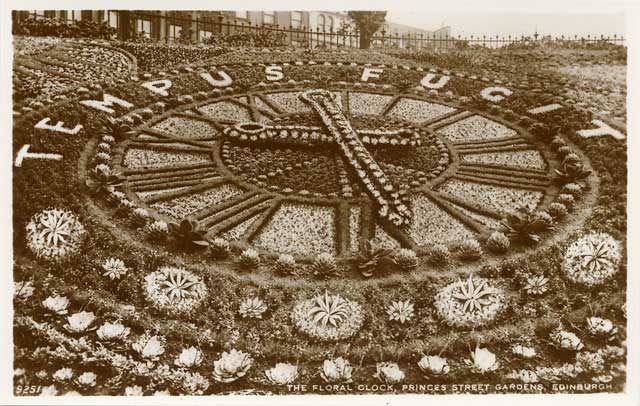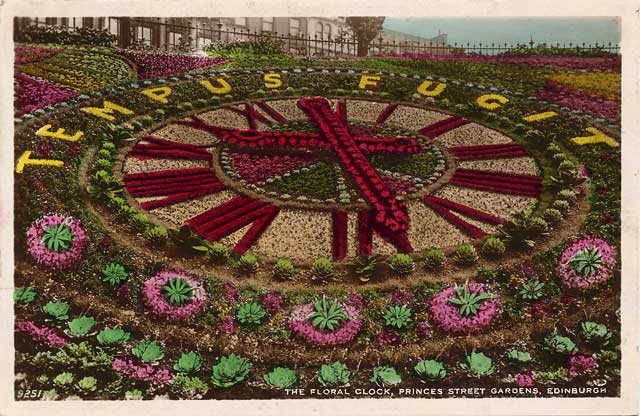|
J B White Production of Colour Postcards from Sepia Postcards The Floral Clock in West Princes Street Gardens, Edinburgh 1928 |
Original (Sepia) (5.5ins x 3.5 ins)
© J B White, Dundee. Reproduced with acknowledgement to Alastair Whaite.
Final Postcard (5.5ins x 3.5 ins)
© J B White, Dundee. Reproduced with acknowledgement to Alastair Whaite.
|
Production of Colour Postcards from Mono Postcards |
|
The coloured postcard above was produced using Method 1 described on the Coloured Postcard History page. Alastair White explains: Method 1 From late 1930s "A run of regular (sepia) real photo cards would be subsequently 'hand coloured' by teams of ladies sitting at tables, applying dies to them via stencils and brushes. I would guess that this started in the late 1930s, continuing until about the end of the war years when sepia became unfashionable; then carrying on until the 1950s with black-and-white real photos providing the base. The minimum run, I recall was 1,000, compared with 250 in monochrome. I believe that my father stumbled on this process by a chance encounter with a Frau Kraal, a German lady who was somehow involved. Alastair White: December 7, 2007 In fact, the postcard above is about a decade earlier than the late-1930s, mentioned by Alastair White above. Perhaps J B White used the same photograph for several years, rather than photograph the clock each year. Peter Stubbs: June 7, 2008 |
|
J B White (Dundee) |
|
|
Floral Clock |
Floral Clock |
Floral Clock |
Floral Clock |

